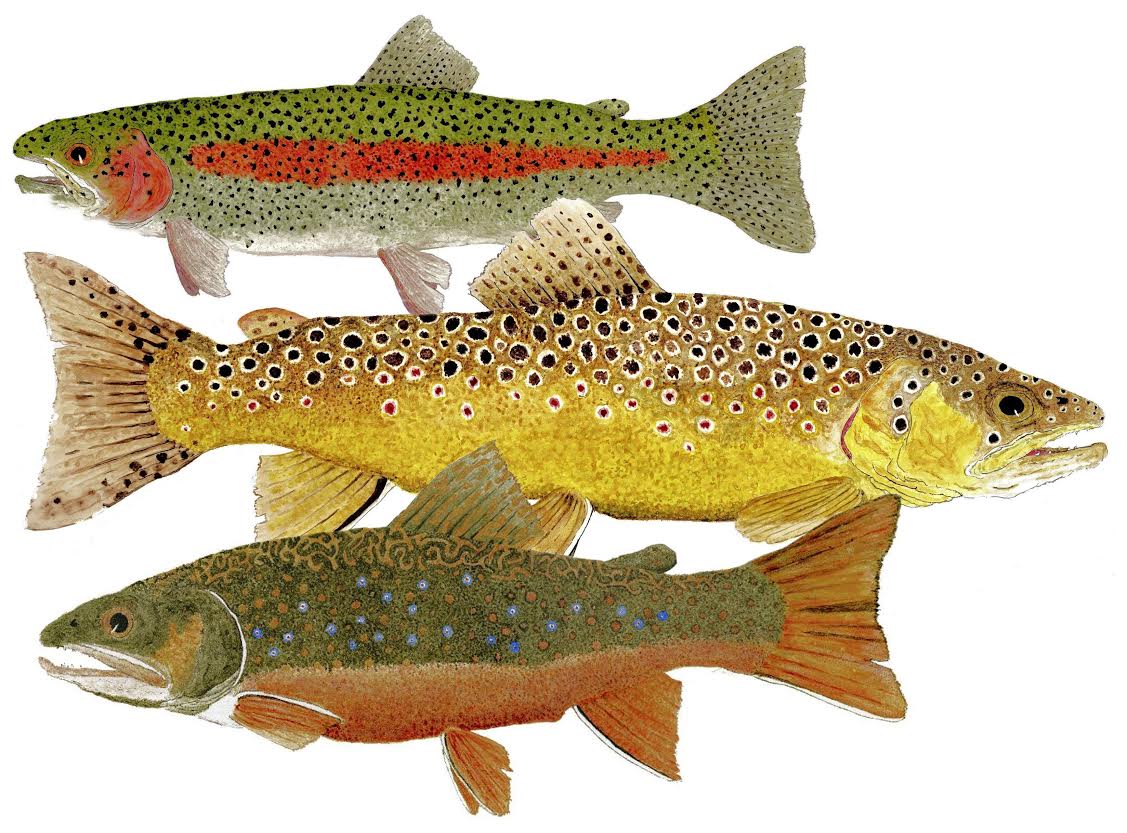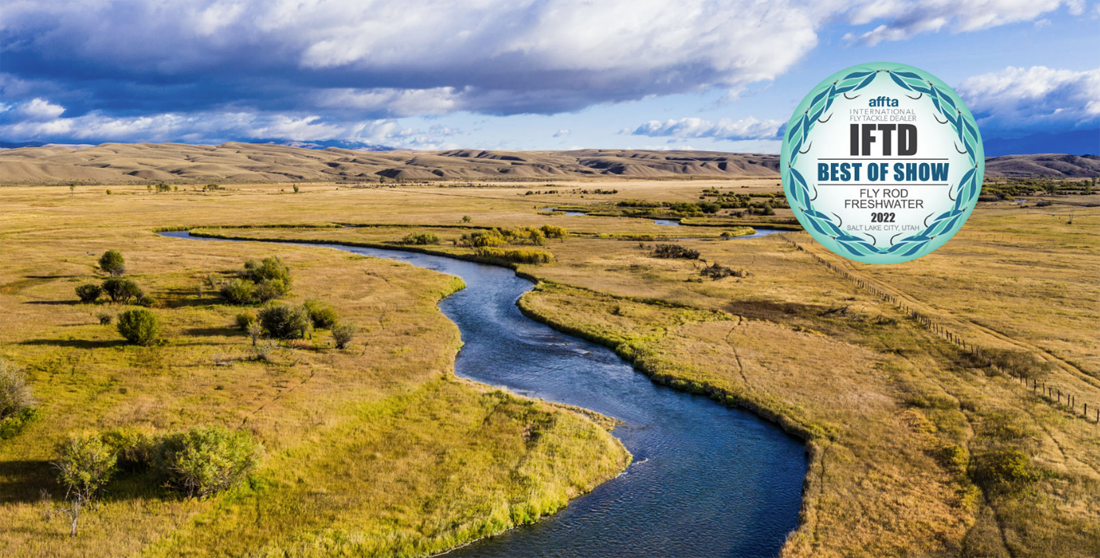
An award winning striper by watercolorist Thom Glace’s – commissioned Morone saxatilis. Click here to visit angler-artist Thom Glace’s website.
Rig Mo Beta and enjoy the fight
By Skip Clement
Modern fly rods, especially established brands with a range of weights [2- to 12-weight or more], are designed to manage under and overlining and types of fly lines to produce better casts in any number of conditions and fly needs. On the whole, trout rods can better manage over and underling because trouts are generally caught at distances under 35-feet [according to Orvis and others]; thus, no casting limiting distance interferes; as a matter of fact, short casts are the ticket with riverine trouts.
The difference with overlining 4-weight only changes the feel of the cast, not an undefinable quandary. With a conventional cast, a heavier line has a more open loop but can better manage a heavier fly, wind, or both.
Winston Fly Rods
Angie Roth, my angling partner, has been an up liner for decades, fishing older model Winstons and greatly appreciating their angler-friendly castability already installed.
Angie has two reels, a 4- and a 6-weight. With each fly reel, she has spare spools. For example, Angie has her 4-weight spare spool lined with WF 3- [underlined] and 5- [overlined], and with her 6-weight, underlined with a 5-weight and overlined with a 7-weight fly line. With 95% [approximately] of fly lines being WF, she manages nymphing with a 10-foot Orvis rod, a fly line, and a leader of a varied kind.
When trouts and salmons regularly come to dinner, weighing 5- and 6-pounds and 12- and 20-pounds or more, Angie uses a 9-weight reel with 8- and 10-weight fly lines on spare spools to meet both challenges.

Reprinted with permission – Rainbow, Brown, and Brook. The rainbow is a westerner by birthright and includes the steelhead, and the brook is a native easterner, but it is not a trout. It’s a char with Maine and Eastern Canada, where the big boys get caught. This illustration by world-renowned watercolorist Thom Glace.
My WF fly lines choices match up similarly, but with several leaders build changeouts at the ready
I was introduced to overlining early because Florida and the Bahamas are notorious for frequent winter cold fronts and subsequent gusty days in the 15 to 20 knots range. Wind and big fly resistances mean 8-weights struggle with bonefishing, but 9- and 10-weight do much better with med-fast or fast rods.
I chose a 9-weight reel and spare reels rigged with WF8- and 10-weight lines. But, again, it is only the feeling that is the adjudicator of cats with under and overlining There should be no struggle casting underlined or overlined fly lines if you own a quality rod maker’s rods/lines.
Note: Leader builds will always change to best react to casting in ever-changing conditions or game fish coming into play. For example, a windy day would never be kind to a long leader fishing for trouts, salmon, snook, or bonefish.

Winston Fly Rods, a step ahead. Photo Winston Fly Rods.

